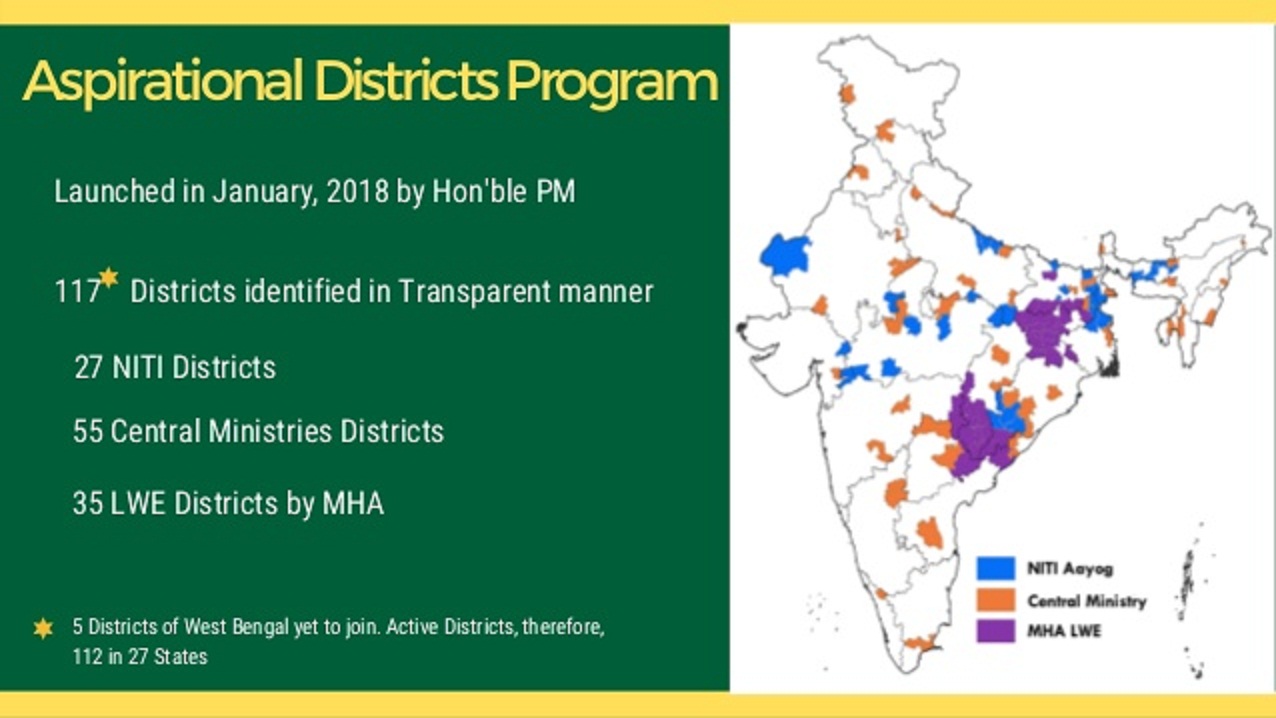Why in the News?
A report released recently by the United Nations Development Program (UNDP) has described the Aspirational District Program as ‘a successful model of local area development’.
What is the Aspirational District Programme?
- Launched in January 2018, the ‘Transformation of Aspirational Districts’ initiative aims to remove this heterogeneity through a mass movement to quickly and effectively transform these districts.
- The contours of the programme are Convergence (of Central & State Schemes), Collaboration (of Central, State level ‘Prabhari’ Officers & District Collectors), and Competition among districts driven by a spirit of mass Movement.
- States as the main drivers, this program will focus on the strength of each district, identify low-hanging fruits for immediate improvement, measure progress, and rank districts.
How are districts selected?
A total of 117 Aspirational districts have been identified by NITI Aayog based upon composite indicators.
- These include Health & Nutrition, Education, Agriculture & Water Resources, Financial Inclusion and Skill Development and Basic Infrastructure which have an impact on the Human Development Index.
- Weightage has been accorded to these districts as below
- Health & Nutrition (30%)
- Education (30%)
- Agriculture & Water Resources (20%)
- Financial Inclusion & Skill Development (10%)
- Basic Infrastructure (10%)
What is the United Nations Development Program (UNDP)?
The United Nations Development Program (UNDP) is a global development program of the United Nations. It works to reduce poverty, develop infrastructure and encourage democratic administration.
It was formed in 1965. It is headquartered in New York, USA.
Current Ranking
Shravasti of Uttar Pradesh has topped the ranking of aspirational districts by NITI Aayog in December 2020.
Dhalai of Tripura in second place, Garhwa of Jharkhand in third place, Baksa of Assam in fourth place and Bokaro of Jharkhand in fifth place.
Challenges
- Although the program is highly inclusive, it has failed in key points like environment and gender.
- It is implemented by multiple ministries leading to lack of coordination.
- It is affected by the issue related to insufficient budgetary resources.
Way forward The success of the Aspirational District Program has been certified by national and international agencies. This is a major initiative to improve the lives of citizens living in the most backward areas of the country. The need of the hour is to realize the vision of ‘Sabka Saath, Sabka Vikas’ to overcome challenges and ensure inclusive growth.



